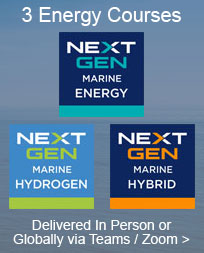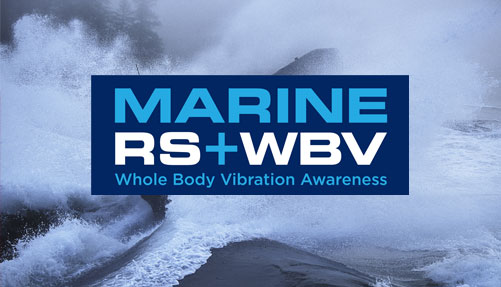Repeated Shock (RS) on planing craft
is usually caused by random 'hits' from head sea impacts,
crossing seas or overtaking following seas.
Whole Body Vibration (WBV) exposure on planing craft
is usually caused by continuous 'hammering' from
short steep seas or wind against tide conditions.
Research in the past decade has led to a better understanding of the forces involved on the human body at sea. Professional organisations are now asking what they can do to reduce the effects of vibration and potential injury as the effects of fast boat transits take their toll on the day to day fitness and long-term health of personnel.
The EC Vibration Directive came into force in 2010 and there is now an increasing awareness that professional operators need to reduce the effects of vibration on their employees by all means. Professional boat drivers know that even moderate sea conditions can be painful and may lead to serious injuries to ankles, knees, lower back and neck. What they often do not realise is that a fast boat in 1 metre (3 feet) seas can measure impacts of up to 10g on the deck.
Shock mitigation begins with the hull, but new high performance craft only represent a tip of the iceberg for fleet numbers globally. Professional and commercial fast craft sectors have adopted suspension seats as the main shock mitigation solution - but not all suspension seats are created equal. The majority of in-service craft belong to hard working organisations with budget constraints and limited space on deck, or hulls are close to their payload for lifting by dockside crane or onboard davit.
Shock Mitigation By All Means
A shock mitigation strategy is important for people who want to go further, faster or for longer in extreme conditions. RHIBs and fast craft are effective ways to move people and equipment but as vessel designs and technology improve even a very fit human body has limits. One of the things that marine professionals have in common is a growing awareness of injury. As crews need to focus on the task at hand it is important to protect all occupants of fast boats from injury, whether they are sitting or standing.
When a planing craft is running in flat conditions occupants experience vibration coming up through their feet on the deck, held there by gravity and body mass. In flat sea conditions there is vibration from the engine but boat occupants are not exposed to harm. All fast boat operators know that waves change everything! Besides ocean swells, waves can be wind blown and start to build up in a few minutes. Or can be caused by the wake from larger vessels even in calm weather conditions.
As powerboats get lighter and faster there are new issues to consider. Operating a fast boat in flat open waters is relatively easy. But operators running powerboats at high speed need to understand the forces they are dealing with. What is vibration and impact doing to novice crews and less experienced passengers when the boat hits a wave?
Professional high speed craft operators need a combination of shock mitigation solutions. But there is no ‘silver bullet’, shock mitigation is about reducing forces and potential injury by a few percent wherever possible via the hull, seats and deck.












